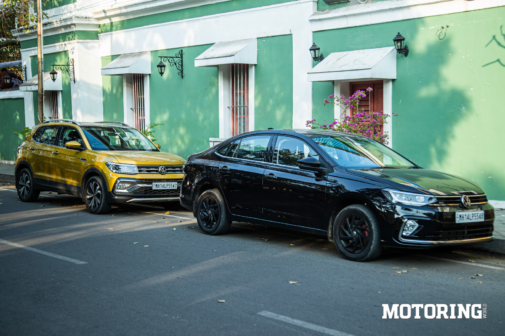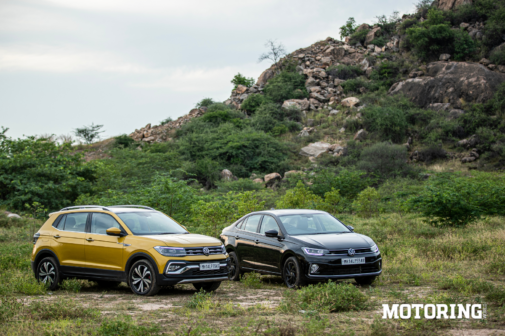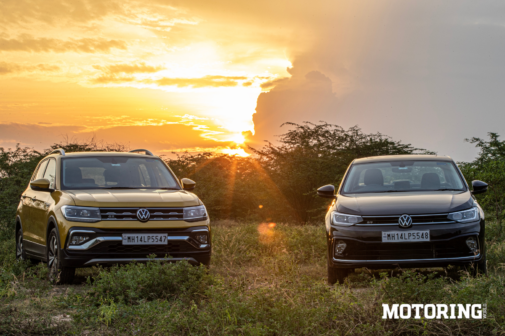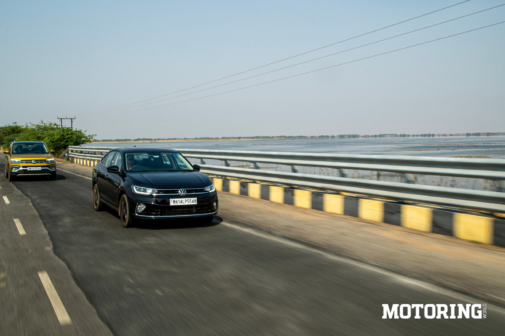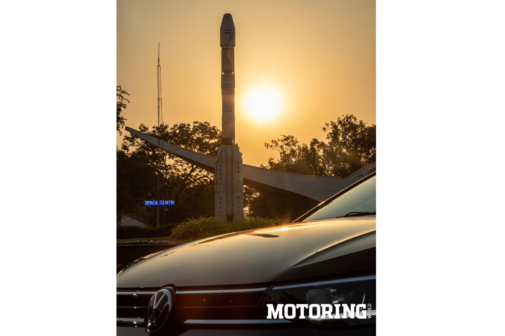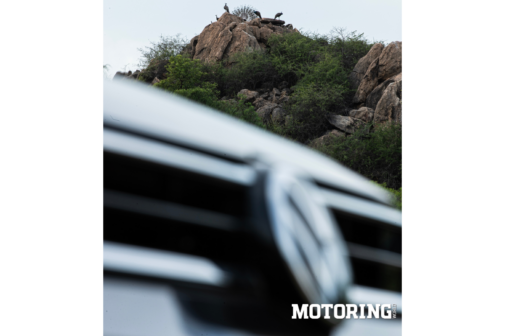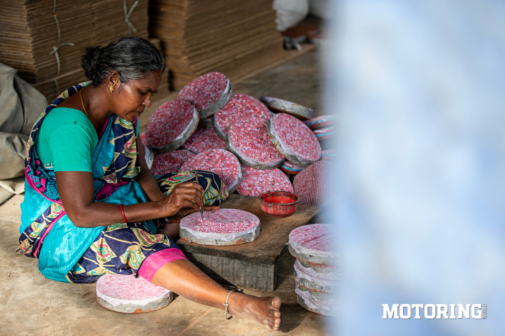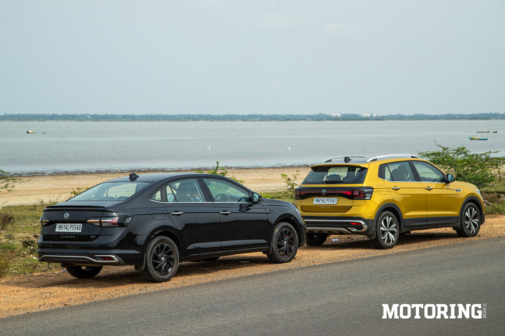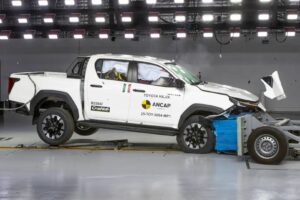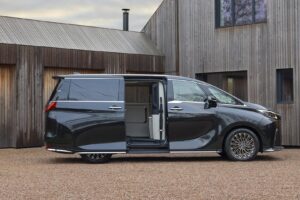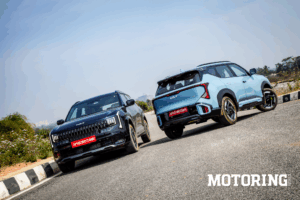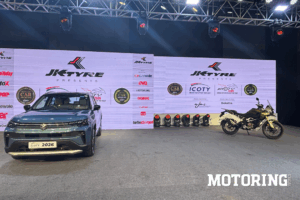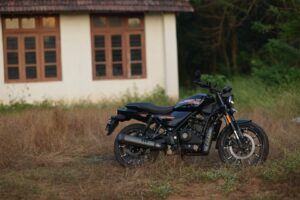Photographs by Shashank MB
Our agenda over the second leg of The Rocket Route was to drive to the home of India’s other kind of rocket. Now, where might that be? The suspense wasn’t going to be a short-lived one, seeing as we had our duo of rockets — the Taigun GT 1.5 TSI and VW Virtus GT Plus 1.5 TSI — to get us there rapidly. For what it provided in the way of intrigue and humour, though, it served us well to keep our final destination a top secret.
Our stay in Puducherry at the end of Leg 1 had been a calming one; we welcomed the opportunity to take a little breather even if our pair of GT-badged, German-engineered cars didn’t seem to want one! The energy of our cars also meant we deviated from our original plan of wandering around Puducherry’s French-era exhibits beyond what we’d indulged in the previous evening, and set off towards the east coast enthusiastically early the next morning.
The Taigun took over the lead this time around, carving through Puducherry’s maze of arterial roads with refreshing energy — it really does have a sense of youthfulness that’s immediately infectious — while the Virtus stayed close on its heels. Indeed, with the kind of time we’ve spent behind the wheel of the Taigun — in Mumbai, to Goa and even through Ladakh — it’s become a sort of best friend. The Taigun is the kind of SUV that will even make first-time drivers feel instantly at home in it, be it because of the ease with which it munches miles or just that high-quality SUV experience it offers. We happen to drive one (under some creative pretext or the other) and, needless to say, we thoroughly enjoy it. Just as we were at this moment!
Meanwhile Pablo felt like he’d pulled off a coup, having swiped the keys to the Virtus earlier; understandable, considering just how exciting to drive it had so far proven to be on this drive. Never mind the fact that he accidentally radioed his exact thoughts to the Taigun, thereby giving away his sinister plan. Not that it mattered because, both, the Taigun and the Virtus, courtesy their fantastic and comfortably powerful TSI engines made for an absolute treat down The Rocket Route.
With the mood lightening up, our road trip got even more enjoyable. We happily drove further up north, with the views getting more spectacular with every passing minute and our cars keeping us in great spirits, with their effortless, brisk performance as we hugged the Bay of Bengal. Lots of radio banter kept us in a great state of mind and that was essential because, in just a little while we were about to get somewhere very important.
When we did arrive, having driven across a narrow, dusty trail that looked like it was leading nowhere in particular, a sudden heaviness descended upon us. We were, of course, on the periphery of the Sholavaram airfield. If you’re unfamiliar with what Sholavaram represents, you’re in for a treat. You see, decades ago, for exactly two weekends of February each year, people from all over the country would flock here in the thousands — to witness racing at its rawest. Back in the ’50s, Sholavaram, a former WW2 airfield, became the breeding ground of Indian motorsport. It’s where the brave and the wealthy assembled, year after year, to put on quite an incredible show of speed. Sholavaram gave India a reason to dream about speed, to celebrate it. And then, like all good things, we left it behind.
It’s said that, to this day, no Indian motorsport event witnesses the kind of turnout that Sholavaram had, back in the day. Nearly 50,000 people would show up to watch roughly 800 participants compete across classes which included formula cars, race bikes, and some of the world’s most exotic production machines. It can be said without a doubt that if we have an enthusiast culture in India today, we owe it foremostly to Sholavaram. It’s where India got its first taste of speed, where the seeds of performance motoring had once been sown. If only we could have preserved it — perhaps we could have indulged in a showdown between our rockets in the form of the Taigun and Virtus!
We’d come a long way from where we’d begun, but our cars showed no sign of fatigue. Our made-in-India powerhouses are surely a sign of how far we’ve come as a motoring nation, where compromises don’t stand a chance and value is everything. VWs, over the years, have rewritten the rules of what a car should be like. They’re special cars, made by exceptional minds and entirely unlike anything else out there. They’re cars that deserve to be celebrated.
Our celebration would have to wait just a little while, though, because barely a few hours later, we had arrived at our destination – Sriharikota, in Andhra Pradesh. An air of elation enveloped the cars, the crew letting out a few cheers at finally being able to make sense of the suspense. We were in rocket country, after all! Sriharikota is, for those of you who are unaware, home to the Satish Dhawan Space Centre, where the Indian Space Research Organisation (ISRO) launches satellites using multistage rockets such as the PSLV and GSLV. The first ever rocket to be launched from here was in 1971 and since, India has made its mark in the world of space research with the help of rockets launched from this very place.
While the SDSC was in the process of constructing a state-of-the-art museum and gallery for tourists, to simply be near its hallowed gates, alongside scaled-down versions of India’s most illustrious rockets made us ecstatic. Our pair of Volkswagens lined up neatly for photographs, looking every bit as racy and raring to go as the towering structures in their backdrop, while we took a few steps back and soaked in the magnitude of what we’d just accomplished.
The Rocket Route was an idea we’d conceived with the thought to celebrate India’s diversity, ingenuity and its progress with rockets as a spectacular reference point. Our Taigun GT and Virtus GT Plus, though, took us beyond those tremendously fascinating fiery arrows and powered a drive that unlocked our love of the road, while teaching us a thing or two about engineering brilliance. It would take a lot to match up to this kind of driving experience but, fortunately, we had a 4,500 km drive home to look forward to.










